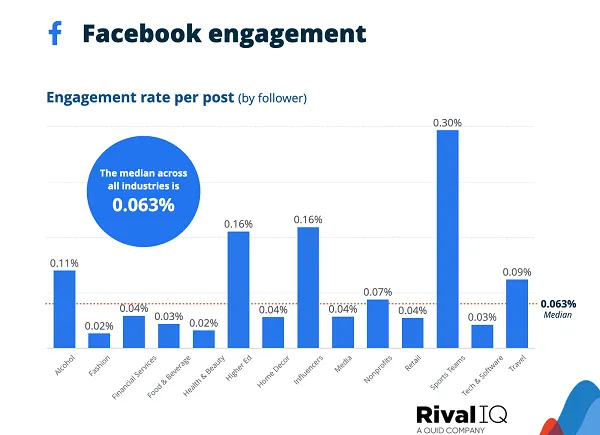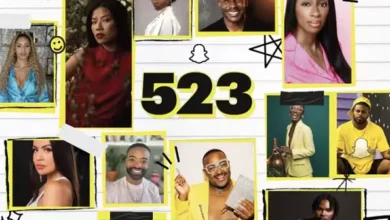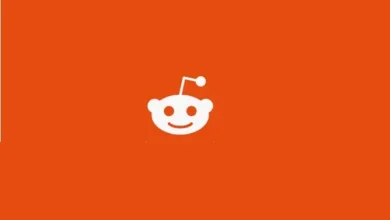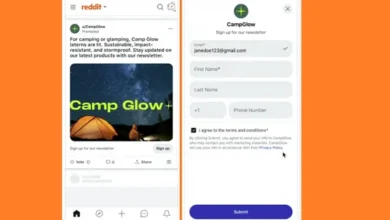
Given the recent fluctuations in social media referrals, which have trended downward for most industries, it can be difficult to get a true measure of how your content is actually performing, and whether the declines that you’re seeing are a result of your strategy failing to deliver, or the platforms reducing reach and engagement.
The latest Social Media Benchmarks report from RivalIQ can help to provide some additional context in this respect, with insights into the average engagement rates that brands in various industries are seeing across all of the major apps.
The full report, which you can check out yourself here, is based on more than 5 million posts, and over 10 billion likes, comments, and favorites across Facebook, Instagram, TikTok, and Twitter. The report also includes industry breakdowns, providing more specific insight, but in this post, we’ll take a look at the topline numbers.
First off, on Facebook. According to the data, the median engagement rate for all industries on Facebook is 0.063%, which is a slight rise on last year (0.060%).

As you can see in this chart, sports engagement lifts that average up, while influencers, higher education, and alcohol brands also continue to see relatively strong engagement in the app.
Yet even the best performers are only getting a tiny percentage of their audience to engage with their posts. That likely points to reach being a better metric to measure, as most people simply don’t ever engage in social apps.
Does that mean social media is less effective as a marketing tool than has been presented? Well, brand awareness, and subsequent indirect action would probably suggest that it’s still worth the effort. But as fewer people actually look to actively participate in social apps, preferring to only consume content instead, it may be worth re-aligning your KPIs around other metrics, like actual sales, email sign-ups, etc., in order to track relative performance.
Overall engagement rates on Instagram, meanwhile, declined slightly on 2023, down to 0.43%.

Instagram engagement rates have actually been steadily decreasing for years now, with the same report showing average brand IG engagement was at 0.98% in 2021.
So while the overall engagement percentage is still small, it’s actually dropped by more than half in a couple of years. Increasing competition, and again, changing trends in user consumption, aligned around Meta’s AI-based content recommendations, have led to fewer people seeing or directly interacting with brand updates.
RivalIQ also seems to be firmly in the “never calling it X” camp, with “Twitter” average engagement at 0.029%.

The platform formerly known as Twitter has never been a great driver of referral traffic, and this is only a slight drop-off in average engagement rate from last year (0.035%). And actually, given that X owner Elon Musk has made it very clear that he’s definitely not looking to assist brands with referral traffic, it’s not as bad as I would have expected, but again, it is another engagement decline to add to the collective shift.
And finally, there’s TikTok, which, according to RivalIQ’s data, has seen a significant decline in brand engagement.

TikTok’s average engagement rate last year was 5.69% per clip, so TikTok referrals have dropped by more than half, on average, over the course of a year.
Though at the same time, brand engagement in the app is still well higher than the other platforms. So while brands may have lost some ground, as TikTok usage behaviors shift, and its algorithms re-align around different content (and also, more brands post more often to the app), there is still significant opportunity for reach and engagement for those that can get it right.
RivalIQ’s report provides some interesting notes on brand engagement, and what you can expect to see on all of the major apps. But really, your actual results will come down to your understanding of your audience in each app, and how you drive action based on that, though it is also likely comforting to note that all brands are seeing relatively low engagement.
Does that mean that people want to engage with brand content less, or that brands, in general, are not great at connecting with them? You decide.
You can check out RivalIQ’s full “2024 Social Media Industry Benchmark Report” here.




